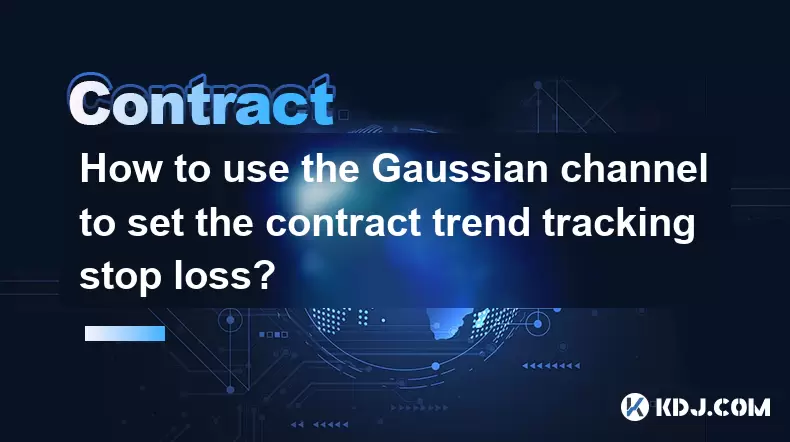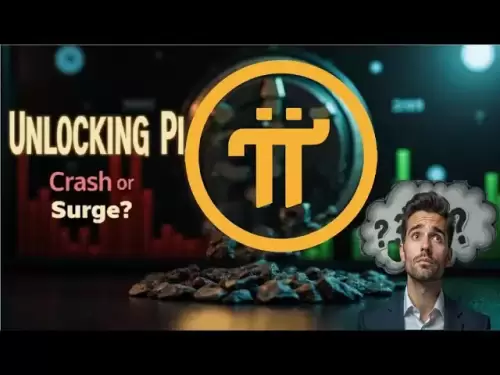-
 Bitcoin
Bitcoin $105,734.0170
-1.51% -
 Ethereum
Ethereum $2,414.7328
-3.26% -
 Tether USDt
Tether USDt $1.0002
0.00% -
 XRP
XRP $2.1748
-2.62% -
 BNB
BNB $647.5663
-1.72% -
 Solana
Solana $148.1710
-3.81% -
 USDC
USDC $0.9999
-0.01% -
 TRON
TRON $0.2799
-0.02% -
 Dogecoin
Dogecoin $0.1586
-4.17% -
 Cardano
Cardano $0.5440
-5.03% -
 Hyperliquid
Hyperliquid $37.0680
-6.59% -
 Bitcoin Cash
Bitcoin Cash $501.2052
-4.01% -
 Sui
Sui $2.6846
-3.47% -
 Chainlink
Chainlink $12.8488
-3.38% -
 UNUS SED LEO
UNUS SED LEO $8.9480
-1.51% -
 Avalanche
Avalanche $17.2059
-3.87% -
 Stellar
Stellar $0.2270
-4.75% -
 Toncoin
Toncoin $2.7889
-3.93% -
 Shiba Inu
Shiba Inu $0.0...01126
-1.76% -
 Litecoin
Litecoin $83.6893
-3.36% -
 Hedera
Hedera $0.1445
-4.49% -
 Monero
Monero $312.4014
-2.58% -
 Dai
Dai $1.0000
0.00% -
 Ethena USDe
Ethena USDe $1.0001
-0.01% -
 Polkadot
Polkadot $3.2920
-3.32% -
 Bitget Token
Bitget Token $4.4629
-1.81% -
 Uniswap
Uniswap $6.5386
-8.42% -
 Aave
Aave $260.3780
-6.01% -
 Pepe
Pepe $0.0...09308
-4.54% -
 Pi
Pi $0.4864
-3.04%
How to open a 100x contract at KuCoin
To trade 100x contracts on KuCoin, navigate to the futures trading platform, select a trading pair, and enter your order parameters, including order type, price, and quantity.
Nov 20, 2024 at 04:57 am

How to Open a 100x Contract at KuCoin
Introduction
KuCoin is a leading cryptocurrency exchange that offers a variety of services, including spot trading, margin trading, and futures trading. Futures trading is a type of derivative contract that allows traders to speculate on the future price of an asset. 100x contracts are a type of futures contract that offers leverage of up to 100x. This means that a trader can control a position that is worth 100 times their initial margin.
Step 1: Create a KuCoin Account
If you do not already have a KuCoin account, you will need to create one. To do this, visit the KuCoin website and click on the "Sign Up" button. You will then be asked to provide your email address, password, and referral code (if you have one). Once you have filled out the form, click on the "Sign Up" button to create your account.
Step 2: Deposit Funds into Your KuCoin Account
Once you have created a KuCoin account, you will need to deposit funds into your account in order to trade futures. To do this, click on the "Assets" tab at the top of the page and then click on the "Deposit" button. You will then be asked to select the cryptocurrency that you want to deposit. Once you have selected a cryptocurrency, you will be given a deposit address. You can then send your cryptocurrency to this address to deposit funds into your account.
Step 3: Navigate to the Futures Trading Platform
Once you have deposited funds into your KuCoin account, you can navigate to the futures trading platform by clicking on the "Futures" tab at the top of the page. On the futures trading platform, you will see a list of all of the available futures contracts. To trade a 100x contract, you will need to click on the "100x" tab.
Step 4: Select a Trading Pair
Once you have clicked on the "100x" tab, you will need to select a trading pair. A trading pair is a pair of cryptocurrencies that you are trading against each other. For example, the BTC/USDT trading pair is a pair of Bitcoin and Tether. To select a trading pair, click on the "Trading Pair" dropdown menu and select the desired pair.
Step 5: Enter Your Order Parameters
Once you have selected a trading pair, you will need to enter your order parameters. The order parameters include the order type, the order price, and the order quantity. The order type can be either a market order or a limit order. A market order is an order that is executed at the current market price. A limit order is an order that is executed at a specified price. The order price is the price at which you want to buy or sell the contract. The order quantity is the number of contracts that you want to buy or sell.
Step 6: Place Your Order
Once you have entered your order parameters, you can place your order by clicking on the "Buy/Sell" button. Your order will then be placed on the order book. The order book is a list of all of the outstanding orders for a particular trading pair. Your order will be filled when the market price reaches your order price.
Step 7: Monitor Your Position
Once your order has been filled, you will need to monitor your position. You can do this by clicking on the "Positions" tab at the top of the page. On the positions tab, you will see a list of all of your open positions. You can click on any position to view the details of the position.
Step 8: Close Your Position
When you are ready to close your position, you can do so by clicking on the "Close Position" button. Your position will then be closed and the profits or losses will be credited to your account.
Disclaimer:info@kdj.com
The information provided is not trading advice. kdj.com does not assume any responsibility for any investments made based on the information provided in this article. Cryptocurrencies are highly volatile and it is highly recommended that you invest with caution after thorough research!
If you believe that the content used on this website infringes your copyright, please contact us immediately (info@kdj.com) and we will delete it promptly.
- Instant Payments, Fintech, and USDC Stablecoins: A New Era of Finance?
- 2025-07-02 18:30:12
- XRP, Ripple Labs, and Escrow: Decoding the Latest Moves
- 2025-07-02 18:30:12
- Crypto Summit, White House, and Bitcoin Solaris: A New Era?
- 2025-07-02 18:50:12
- DeFi, Aptos, and Token Generation: A New Era?
- 2025-07-02 18:50:12
- Peter Schiff, Bitcoin, and the Gold Hedge: A Contrarian's Crypto Turn?
- 2025-07-02 19:10:13
- Paddington Coin Mania: Rare Find or Fool's Gold? The £10K Question!
- 2025-07-02 19:10:13
Related knowledge

How to use the price slope to filter the false breakthrough signal of the contract?
Jun 20,2025 at 06:56pm
Understanding the Concept of Price Slope in Contract TradingIn contract trading, especially within cryptocurrency derivatives markets, price slope refers to the rate at which the price changes over a specific time period. It helps traders assess the strength and sustainability of a trend. A steep slope may indicate strong momentum, while a shallow slope...

How to determine the expected volatility of the contract through the volatility cone?
Jun 19,2025 at 12:28pm
Understanding the Basics of Volatility in Cryptocurrency ContractsIn the realm of cryptocurrency trading, volatility is a key metric that traders use to assess potential risk and reward. When dealing with futures contracts, understanding how volatile an asset might become over time is crucial for position sizing, risk management, and strategy developmen...

How to formulate a contract intraday trading plan in combination with the pivot point system?
Jun 21,2025 at 03:42pm
Understanding the Basics of Pivot Points in Cryptocurrency TradingPivot points are technical analysis tools used by traders to identify potential support and resistance levels. These levels are calculated using the previous day's high, low, and closing prices. In the context of cryptocurrency trading, where markets operate 24/7, pivot points help trader...

How to adjust the contract position ratio through the price fluctuation entropy?
Jun 22,2025 at 11:42am
Understanding Price Fluctuation Entropy in Cryptocurrency ContractsIn the world of cryptocurrency futures trading, price fluctuation entropy is a relatively new concept used to measure market volatility and uncertainty. It derives from information theory, where entropy refers to the degree of randomness or unpredictability in a system. In crypto contrac...

How to use the volume swing indicator to predict the contract volume-price divergence?
Jun 18,2025 at 11:42pm
Understanding the Volume Swing IndicatorThe volume swing indicator is a technical analysis tool used primarily in cryptocurrency trading to evaluate changes in volume over time. Unlike price-based indicators, this metric focuses solely on trading volume, which can provide early signals about potential market reversals or continuations. The key idea behi...

How to use the Gaussian channel to set the contract trend tracking stop loss?
Jun 18,2025 at 09:21pm
Understanding the Gaussian Channel in Cryptocurrency TradingThe Gaussian channel is a technical indicator used primarily in financial markets, including cryptocurrency trading, to identify trends and potential reversal points. It is based on statistical principles derived from the normal distribution, commonly known as the Gaussian distribution or bell ...

How to use the price slope to filter the false breakthrough signal of the contract?
Jun 20,2025 at 06:56pm
Understanding the Concept of Price Slope in Contract TradingIn contract trading, especially within cryptocurrency derivatives markets, price slope refers to the rate at which the price changes over a specific time period. It helps traders assess the strength and sustainability of a trend. A steep slope may indicate strong momentum, while a shallow slope...

How to determine the expected volatility of the contract through the volatility cone?
Jun 19,2025 at 12:28pm
Understanding the Basics of Volatility in Cryptocurrency ContractsIn the realm of cryptocurrency trading, volatility is a key metric that traders use to assess potential risk and reward. When dealing with futures contracts, understanding how volatile an asset might become over time is crucial for position sizing, risk management, and strategy developmen...

How to formulate a contract intraday trading plan in combination with the pivot point system?
Jun 21,2025 at 03:42pm
Understanding the Basics of Pivot Points in Cryptocurrency TradingPivot points are technical analysis tools used by traders to identify potential support and resistance levels. These levels are calculated using the previous day's high, low, and closing prices. In the context of cryptocurrency trading, where markets operate 24/7, pivot points help trader...

How to adjust the contract position ratio through the price fluctuation entropy?
Jun 22,2025 at 11:42am
Understanding Price Fluctuation Entropy in Cryptocurrency ContractsIn the world of cryptocurrency futures trading, price fluctuation entropy is a relatively new concept used to measure market volatility and uncertainty. It derives from information theory, where entropy refers to the degree of randomness or unpredictability in a system. In crypto contrac...

How to use the volume swing indicator to predict the contract volume-price divergence?
Jun 18,2025 at 11:42pm
Understanding the Volume Swing IndicatorThe volume swing indicator is a technical analysis tool used primarily in cryptocurrency trading to evaluate changes in volume over time. Unlike price-based indicators, this metric focuses solely on trading volume, which can provide early signals about potential market reversals or continuations. The key idea behi...

How to use the Gaussian channel to set the contract trend tracking stop loss?
Jun 18,2025 at 09:21pm
Understanding the Gaussian Channel in Cryptocurrency TradingThe Gaussian channel is a technical indicator used primarily in financial markets, including cryptocurrency trading, to identify trends and potential reversal points. It is based on statistical principles derived from the normal distribution, commonly known as the Gaussian distribution or bell ...
See all articles

























































































